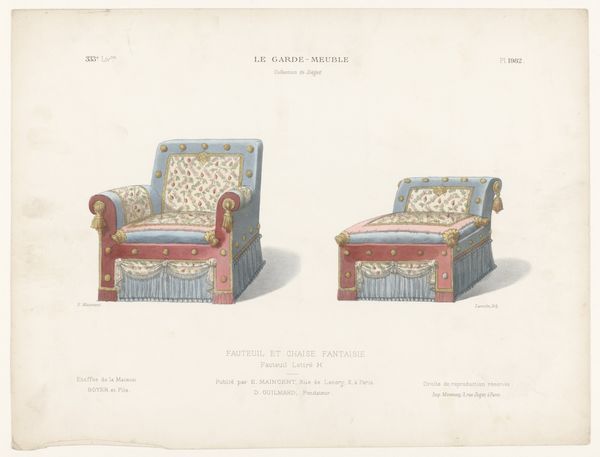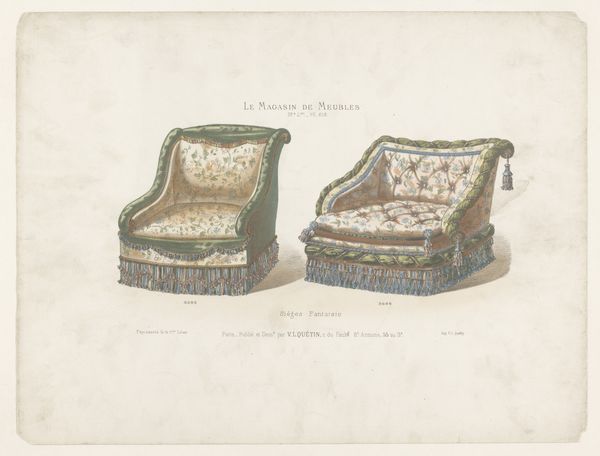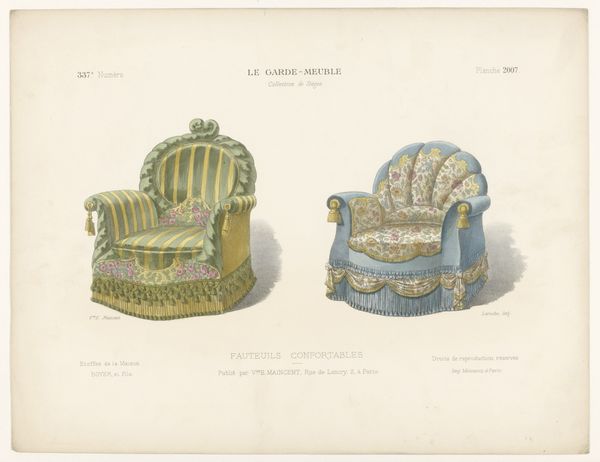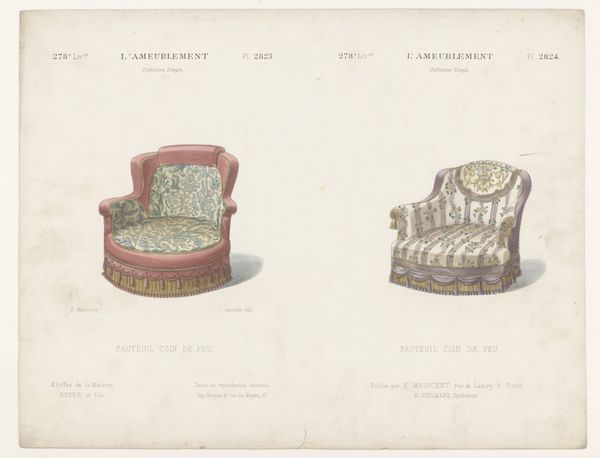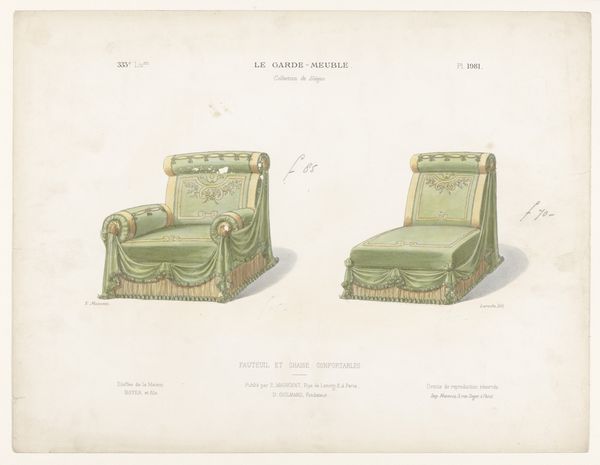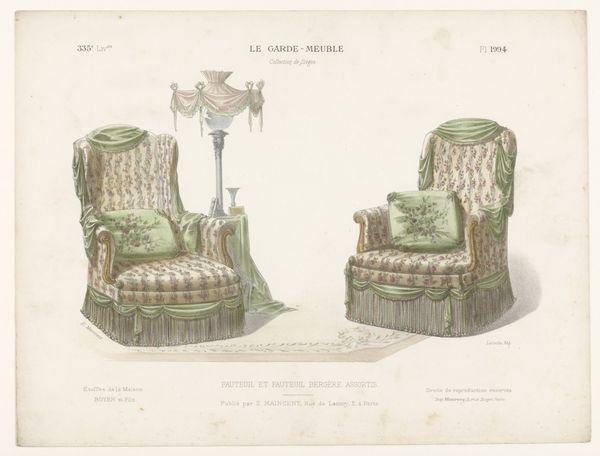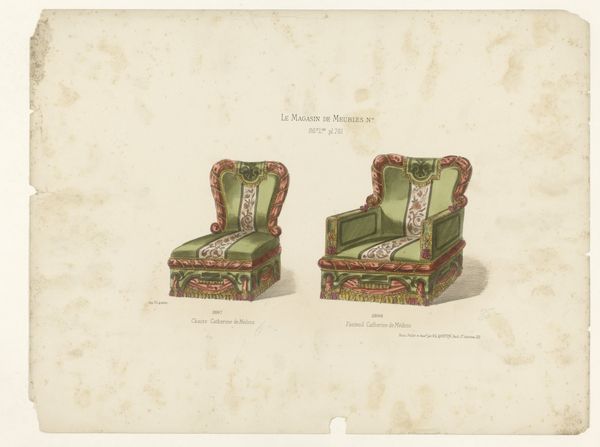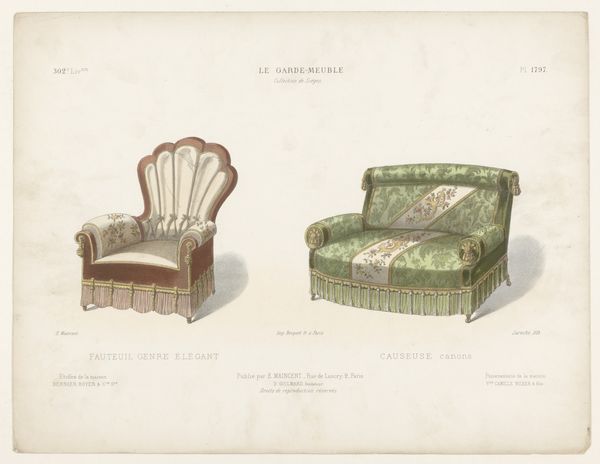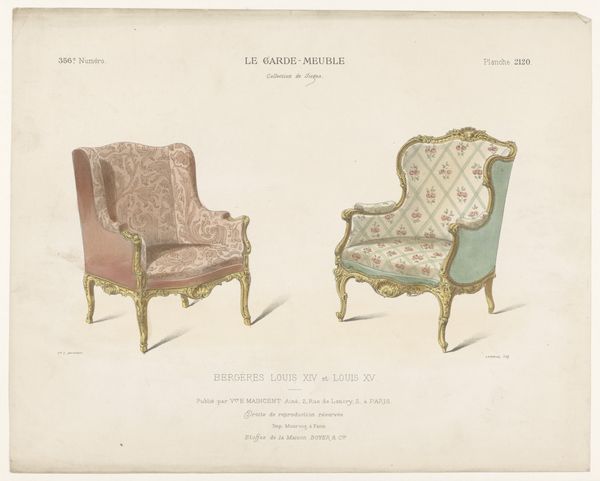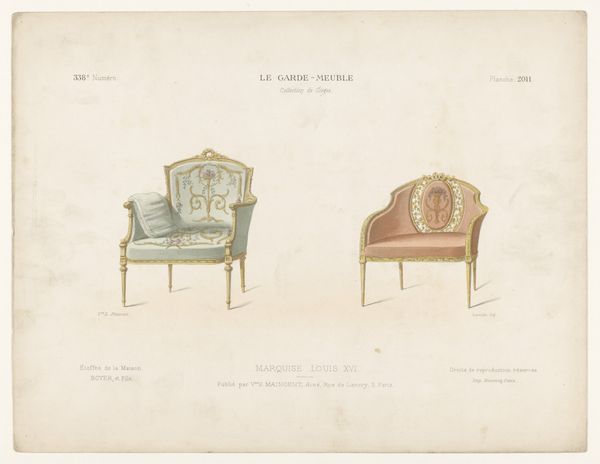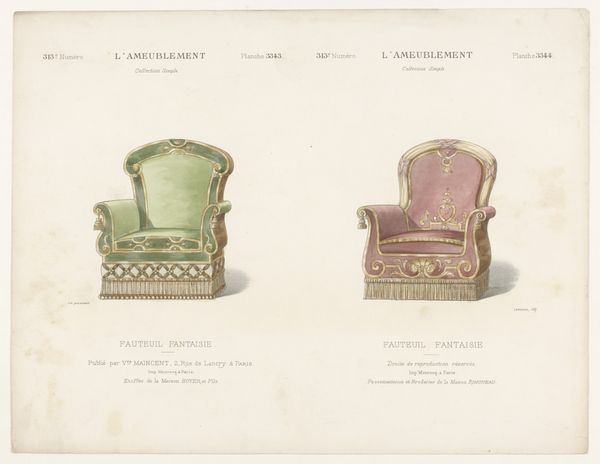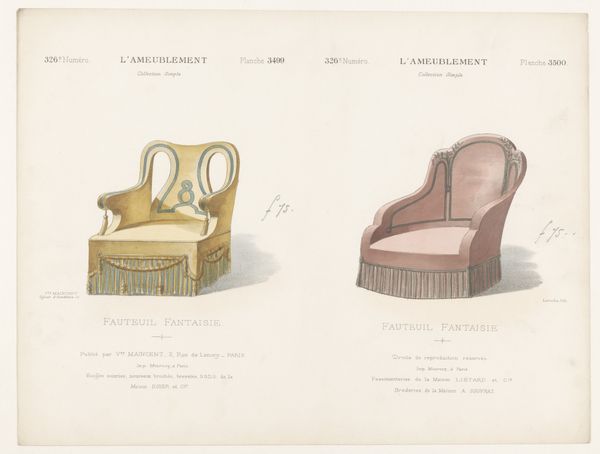
drawing, print, watercolor
#
drawing
#
art-nouveau
# print
#
furniture
#
watercolor
#
watercolour illustration
#
decorative-art
Dimensions: height 275 mm, width 359 mm
Copyright: Rijks Museum: Open Domain
Curator: This is a print from Lèon Laroche's, from around 1885 to 1895. It’s titled “Twee fauteuils,” depicting two upholstered armchairs. The artist used watercolor and drawing for its creation. Editor: My first impression is that these chairs look like royalty. I can almost feel the luxurious fabrics, but there's something a little stuffy about them, too, like sitting properly is mandatory. Curator: They're excellent examples of the Art Nouveau and Decorative Arts styles. This aesthetic responded to industrialization, emphasizing fine craftsmanship. Furniture was integral to defining domestic space. Note that they are called English style chairs. During this period it was very common for the french bourgeois to try to copy aristocratic British aesthetics and lifestyles, which they considered luxurious and upper-class. Editor: Ah, so not just furniture, but a statement! They seem almost like miniature thrones, designed to impress. I can almost imagine wealthy French citizens buying the chairs, wanting to be associated with aristocracy. Do you think someone ever actually commissioned one? Curator: It’s definitely possible. Prints like these circulated, showcasing the latest styles and inspiring wealthy patrons to commission pieces from workshops. These were important for distributing styles throughout different strata of society and showing how people really lived or wanted to live. These images not only showed style and taste but also function as markers of economic prosperity. Editor: The tassels really amplify that impression, and that lush fabric looks like a tactile party waiting to happen! And then that flowery print in one of the chairs contrasts with the tufted fabric from the other, it is like contrasting masculitnity and feminity. One is cozy, and the other looks too perfect. Curator: These visual signifiers were incredibly important in late 19th-century decorative arts, reflecting and reinforcing social hierarchies. Also the prints allow us to understand how gender was conceived at that time. In fact, they say in the artwork itself "Man chair genre English" and "Dancing chair genre English", making clear the contrast and uses. Editor: Thinking about the role of these types of pieces, now I'm envisioning someone reading by a fireplace, completely removed from this chaotic new industrial world. Thank you, Léon, for bringing a slice of lush tranquility! Curator: Absolutely, it reminds us that beyond utility, art also fulfills aspirations and influences social perception, especially at a critical stage in Western culture.
Comments
No comments
Be the first to comment and join the conversation on the ultimate creative platform.
